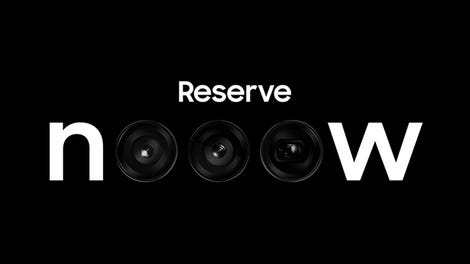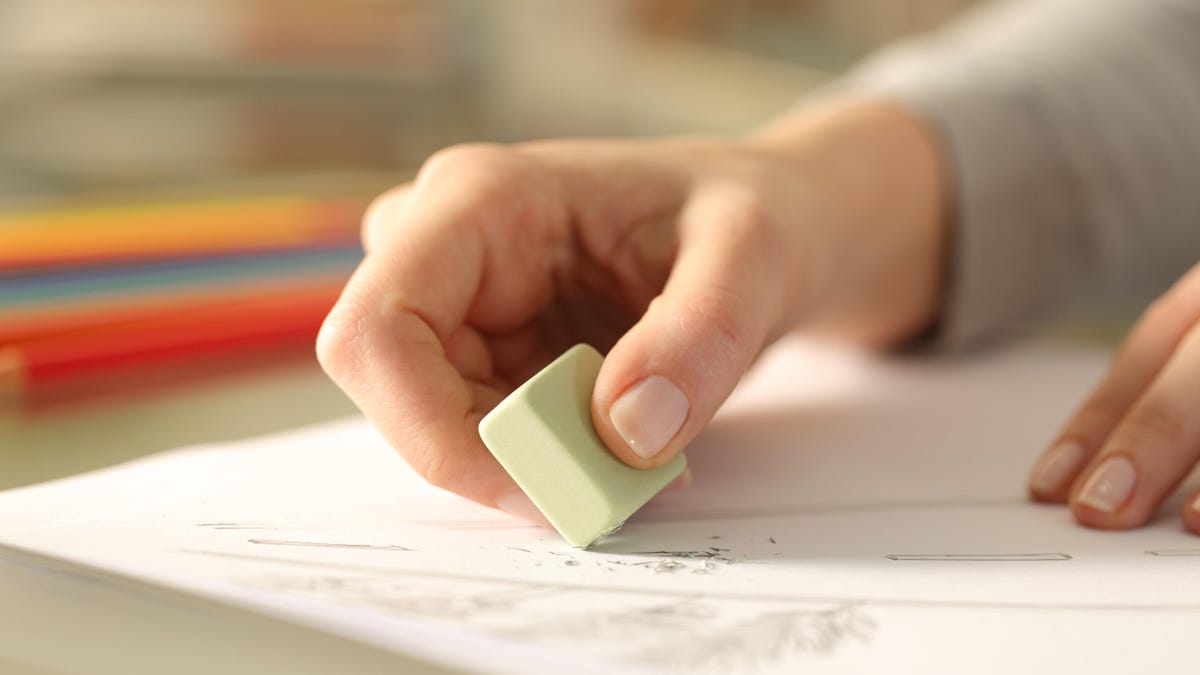[ad_1]

“Everyone makes mistakes,” your mom told you. “That’s why pencils have erasers.” But did she ever tell you how many different kinds of erasers there are? If you think there’s just the one—the pink guys found at the end of a pencil or in a wedge shape—you are, well, mistaken.
There are a surprising number of different types of erasers out there, each intended for a very specific purpose. If you’ve ever attempted to erase something and wound up with a blurry smudge on a ruined surface, you were probably using the wrong one. Here’s a guide to the surprisingly large number of erasers, so at least you don’t make that mistake twice.
Rubber erasers are the most common
Those erasers found at the end of #2 pencils and in wedges are made of rubber. While the classic rubber eraser is pink, you can find them in a wide range of hues. Rubber erasers aren’t the firmest or the softest; they’re sort of right in the middle. This makes them best for erasing graphite from pencil marks without destroying standard-weight paper, but also means they’re not particularly effective for other markings or thinner paper—if you use a rubber eraser on tracing paper, for example, you will wind up with a shredded mess. Rubber erasers also work in part by crumbling away, leaving a lot of dust. You can find “dust-free” versions that leave behind crumbles that can be easily rolled up into a ball for quick disposal.
Plastic erasers can erase ink
These erasers are usually white, are actually made of vinyl, and usually come in a sleeve. They can handle just able any sort of marking medium, including ink, on a wide range of surfaces, including paper, vellum, or even film. The downside is that they will absolutely destroy delicate stuff like paper if you’re not careful.
G/O Media may get a commission

Up to $100 credit
Samsung Reserve
Reserve the next gen Samsung device
All you need to do is sign up with your email and boom: credit for your preorder on a new Samsung device.
You will also often see “Combi” versions of the plastic eraser that features one end for ink and and film erasing, and one end for cleaning up graphite on paper. If you’re working on a delicate surface like drawing or tracing paper, a vinyl Magic Rub eraser is designed to erase cleanly without harming it.
Technical erasers are for pros
These white, plastic erasers work on graphite and charcoal, but not ink. They look like other plastic erasers, but will usually be marked as “technical” or “technik” erasers. They’re essentially “professional-grade” erasers used by drafting pros to erase marks on technical drawings, as they are very precise and very firm. These are usually overkill for anyone who isn’t working on blueprints or something, though they do allow you to be very precise with your erasing.
Art gum erasers work on fabric
Gum (aka art gum) erasers are also rubber erasers (typically brown or transparent), but much softer than your typical pink eraser. They work the same way—crumbling as they absorb graphite or other markings from surfaces—but because they crumble into a fine, dry powder, they can also be used on fabric or even leather as well as paper, erasing markings without harming the material. You probably don’t need a gum eraser for everyday use, but these can be handy if you ever need to erase markings on clothing or if the mess of a typical eraser bothers you.
Kneaded erasers are for artists
Kneaded erasers are very soft and can be sculpted into different shapes. Instead of crumbling, they work by lifting marking off of a surface. Found in gray, black, or even white, they’re primarily used in art applications, as they can be molded into any shape and used to subtly lighten or smudge areas of a drawing in very precise ways (especially when working with charcoal, though they will work on graphite as well). They can be useful any time you need to erase something without harming the surface, because they’re non-abrasive.
Kneaded erasers will become dirty over time, because they absorb what you’re erasing. They can be cleaned and even washed, however, giving them new life.
Erasils work like a pencil in reverse
Erasils or “eraser pencils” are just rubber erasers, but they come in a pencil form—they can even be sharpened like a pencil. So while they’re technically not a different kind of eraser, they are useful to know about—if you ever need to erase some extremely fine lines, you can sharpen one of these to point and erase with extreme precision. You can find pencils with erasil ends instead of your standard rubber tip eraser, making it easy to switch back and forth.
Soap erasers are for big jobs
These white, soft, and large erasers are often shaped like bars of soap. They’re used to erase large sections quickly, with minimal crumbling or damage to the surface. While they’re mostly useful for artists, they can be used by anyone working with pencils or charcoal who occasionally needs to just wipe away an entire day’s work before bursting into tears.
While they can’t wipe away all of your mistakes (sadly, no eraser will work on the relationships messes and embarrassing memories that still haunt you), there’s an ideal eraser for most of them. Choose wisely.
Source link

